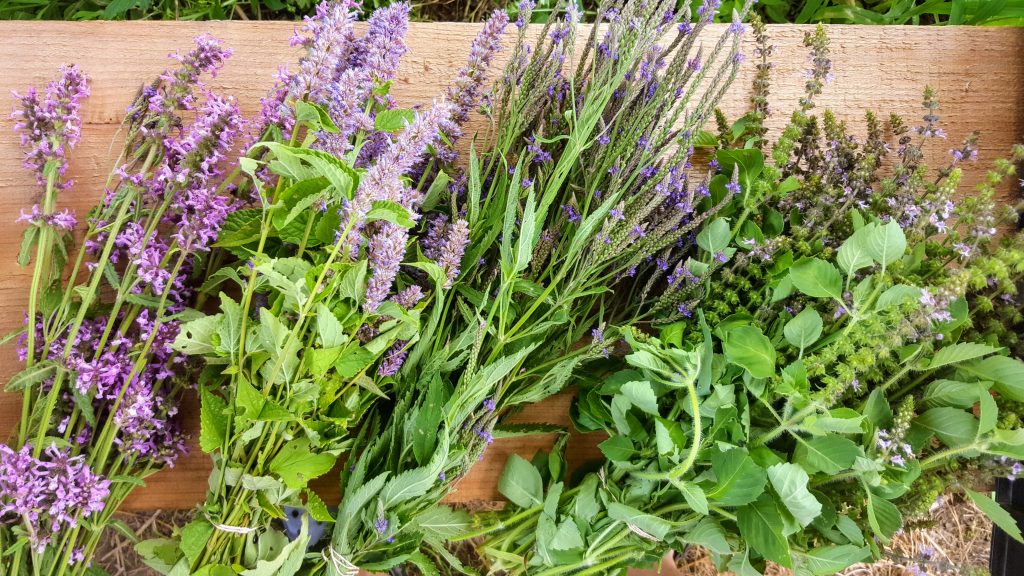Herb Profile: Mullein
Mullein, Verbascum thapsus

Mullein is one of the premier cough and respiratory remedies of the Europrean tradition. It is particularly used for a dry and irritable cough. Mullein leaf opens the lungs, reduces coughing and tightness, lubricates the mucosa, relaxes the larynx, opens the sinuses and creates a feeling of openness in the head. Mullein also has an influence on the nerves and the mind. It has a calming effect on inflamed and irritated nerves.
We pick the leaves in the spring. The leaves are most often dried and used in tea in combination with other herbs. We also tincture them fresh to use in respiratory formulas.
Around late June every year our second year mullein plants shoot up tall stalks filled with yellow flowers. They bloom for a bit, then fall off, and more buds along the stalk start to flower so we have a many months long succession of blooms at the farm.
In the fall we harvest the root. Uses for the root are outlined in detail on Medicinal uses of Mullein Root By Christa Sinadinos and on Jim MacDonald’s page.
A brief summary includes uses for urinary incontinence, bladder mucosa inflammation, bladder infections, nerve pain and spine structural alignment among many others.
Preparations
Mullein can be used as a dry herb tea or fresh herb tincture. The dry herb can also be smoked and is often part of smokers transition blends.
Soothing Lung Tea
Decoct 1 part astragalus, 1 part schisandra, and 1/4 part licorice for 10-15 minutes. Turn off the heat and add 1 part plantain and 1 part mullein leaf, cover and let steep for 5 to 10 minutes. This tea is generally soothing and building to the lung tissue. Drink as needed or as a tonic.
Mullein and Garlic Ear Oil
Mullein flowers and garlic infused into olive oil are a go to remedy for ear infections. Mullein flowers are a beautiful yellow and when they come, are in abundance. Pick the flowers straight into a jar trying to minimize contact with the skin as the oils on our hands diminish the quality of the medicine. Cover the flowers with oil and infuse for 4 weeks. Make an oil of garlic (using olive oil as the base) and mix the two in equal parts to be applied directly to the ear. To use first warm the oil to body temperature and using a dropper apply 3 to 4 drops into the ear. Massage the outer ear and around the base of the ear after applying. Administer the oil every 30 minutes or as needed.
Cautions/Contraindications
None.
🌿 Grow, Harvest & Learn with Us This Season! 🌿
Whether you're looking to fill your apothecary with vibrant, fresh herbs, start your own garden with strong, healthy seedlings, or deepen your knowledge of herbal medicine, we've got you covered.
Join our Fresh Herb CSA to receive weekly bundles of medicinal and culinary herbs, plus guidance on how to use them. Pre-order seedlings to get a head start on your herb garden with our carefully grown plants. Explore our herbal education programs to learn hands-on medicine-making, plant connection, and more.
Looking for high-quality, certified organic herbs year-round? We also offer dried herbs and small-batch tea blends, thoughtfully grown and harvested to bring you the best in herbal wellness.
Be part of a community that values resilience, self-sufficiency, and deep connection to the land. 💚
Sign up for the CSA, pre-order seedlings, shop our dried herbs and tea blends, or explore our herbal education offerings today!
Disclaimer
These statements have not been evaluated by the Food and Drug Administration. This product is not intended to diagnose, treat, cure, or prevent any disease. For educational purposes only. We do not endorse the websites linked to in the resources and have not extensively reviewed all the information on external pages for accuracy. Everyone reacts differently to herbs and we do not attempt to be completely inclusive in the information and contraindications for each herb. Trust your intuition if something is not feeling right for you.
Shop our Apothecary and Nursery
-

Apothecary Products
Nourish yourself and your family with a certified organic farm grown apothecary ...
-

Nursery Products
Grow your garden. We grow certified organic herb, flower and vegetable starts. ...


